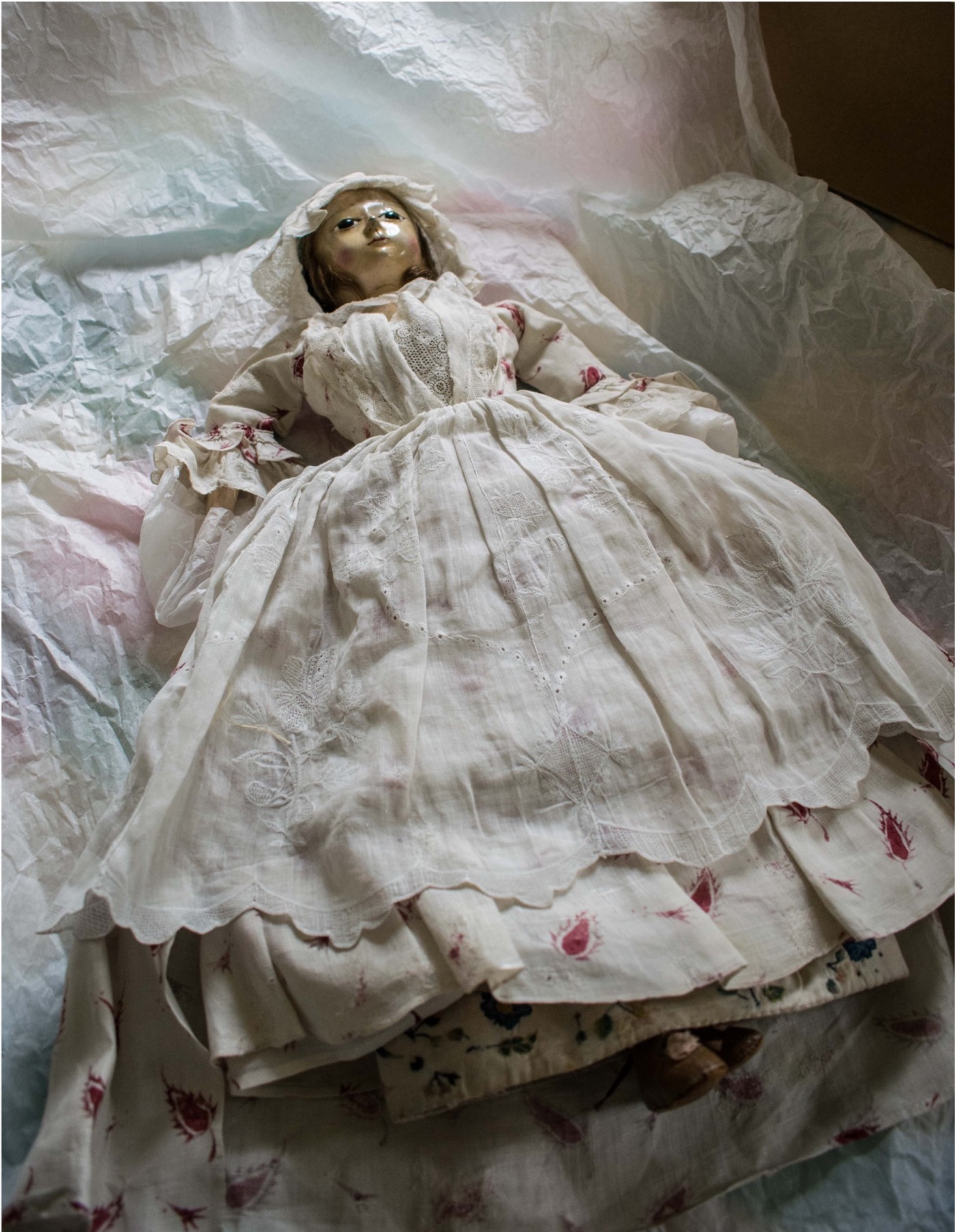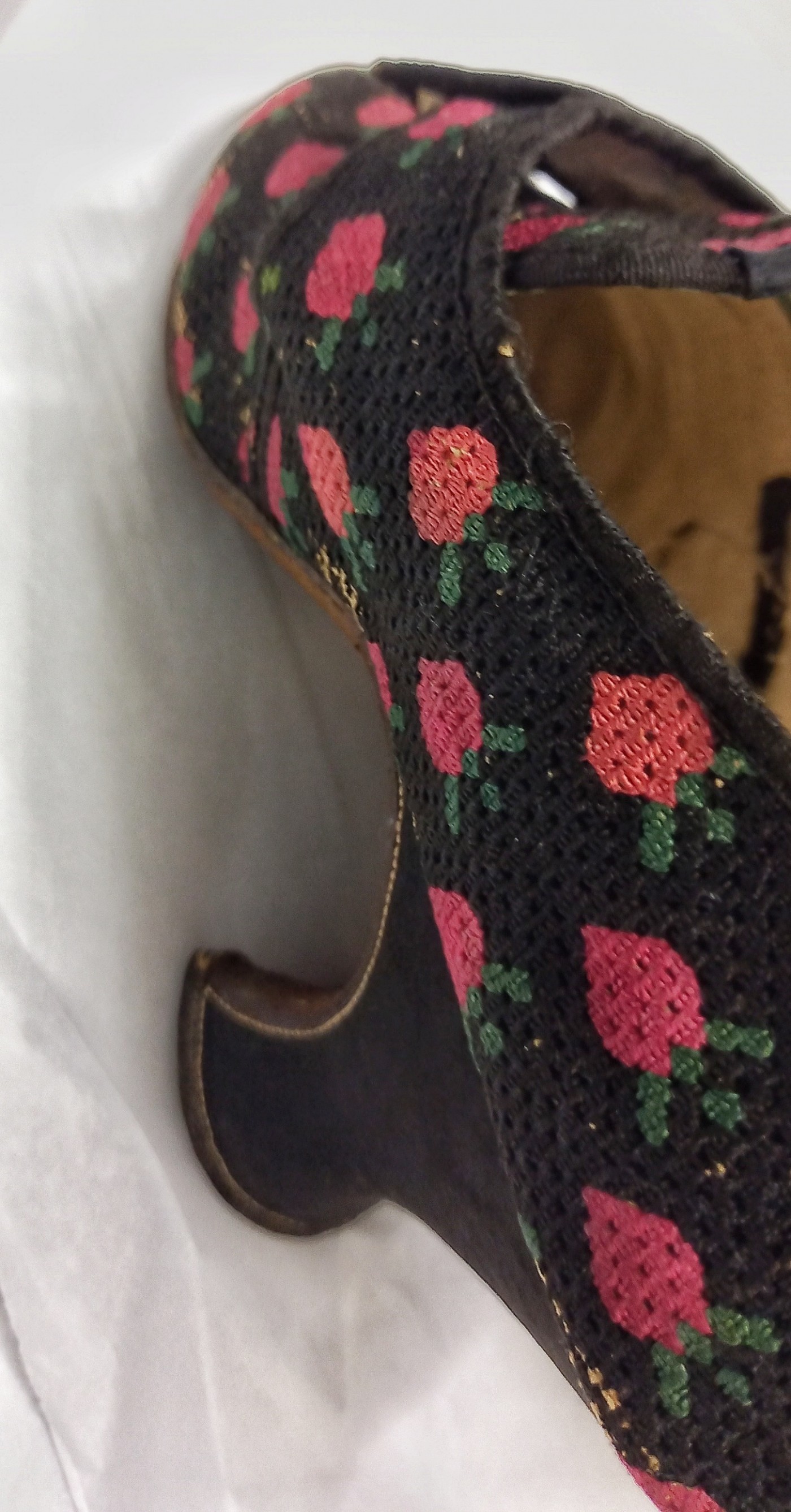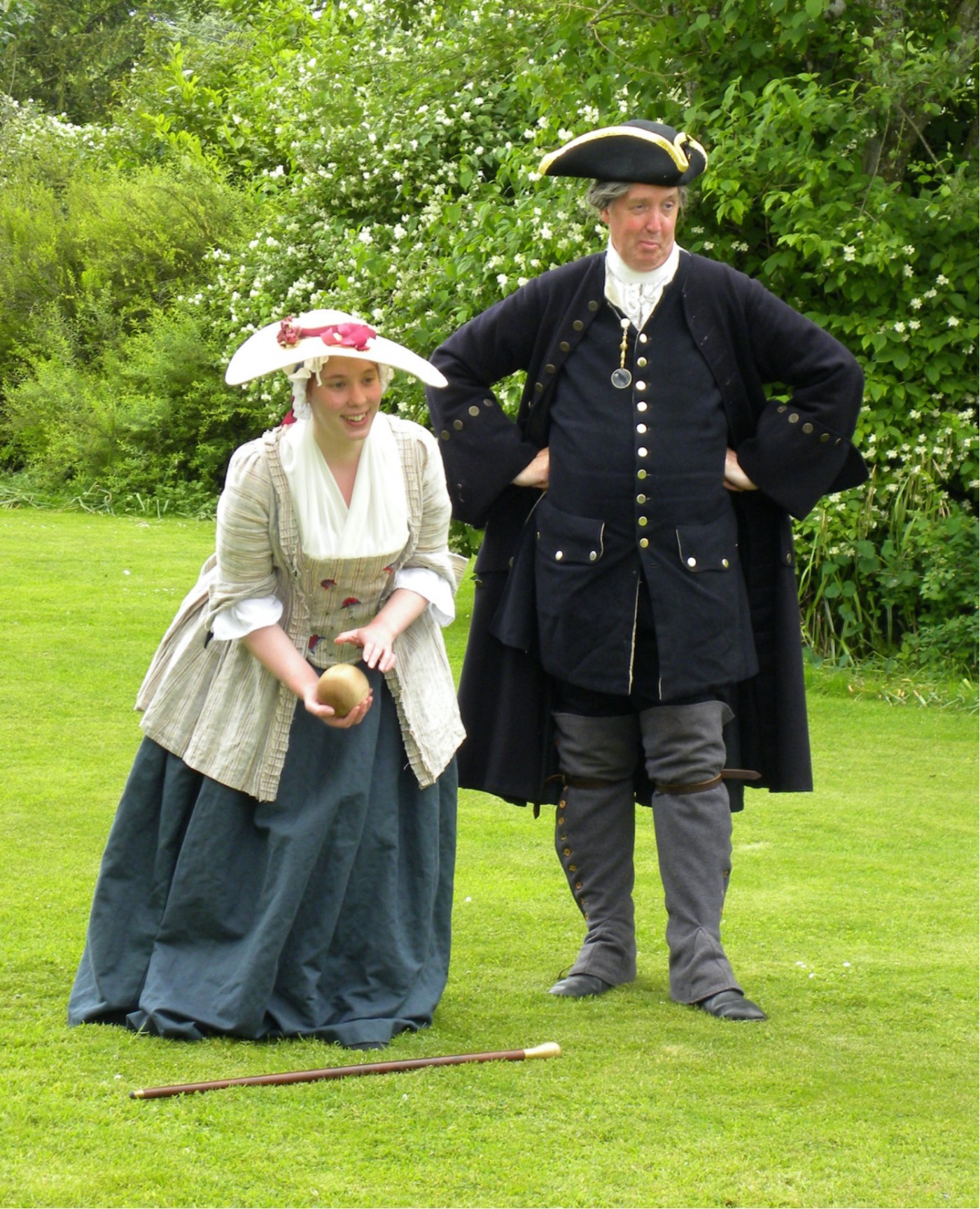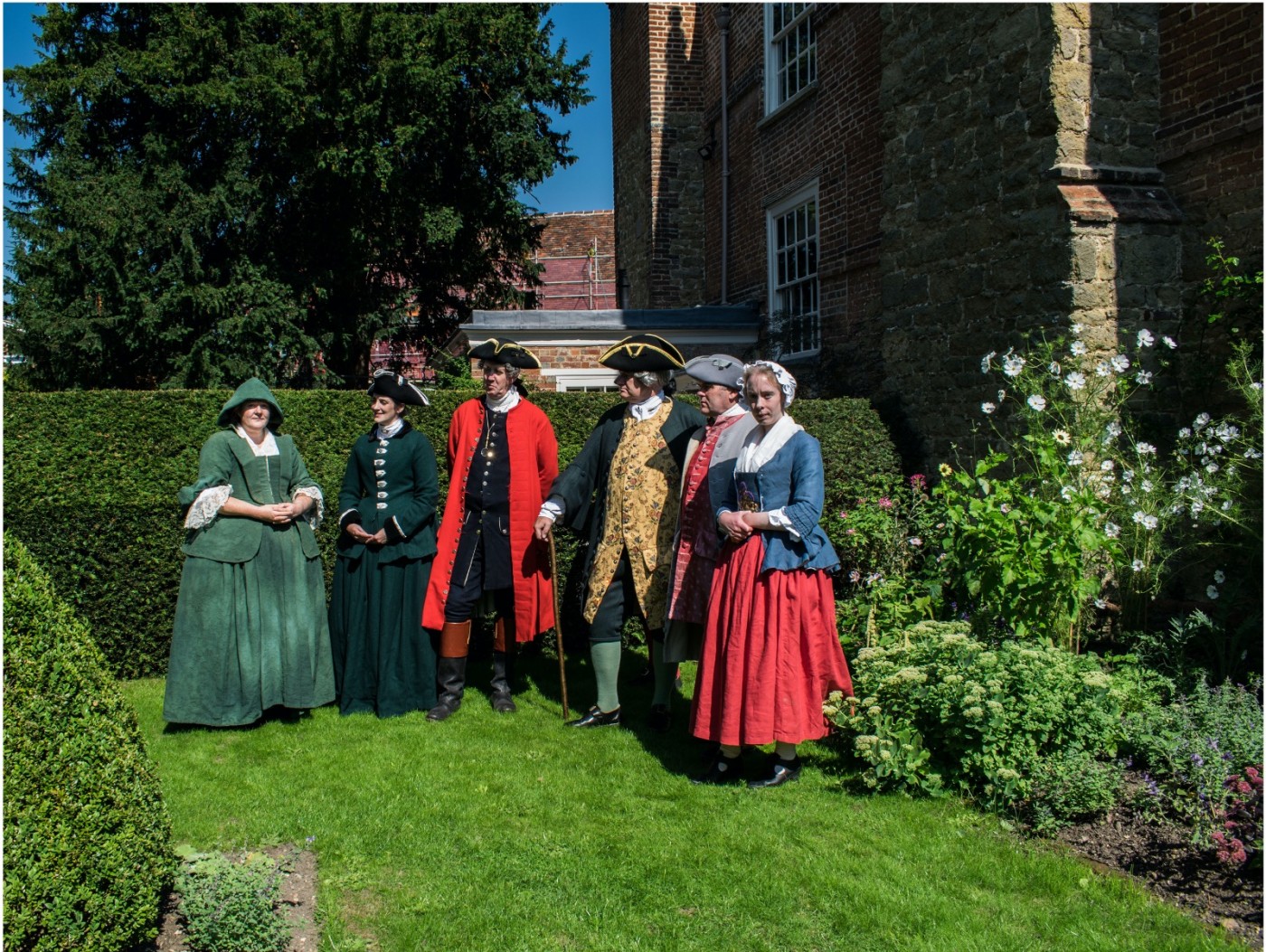- youtube
- bluesky
- Home
- About
- Costume Journal
- Membership
- Conference & Events
- Grants & Awards
- News & Social
Ahead of her upcoming online talk, in this week’s blog post, Costume Society Ambassador, Charlotte Evans discusses how re-enactment is an integral part of her academic research. Specialising in the portrayal of civilian life between 1730-1760, Charlotte explains how re-enactment gives important insight into how women experienced their clothes and by extension their bodies.
We have all seen it – the on-screen portrayal of the young lady tightly laced into her whalebone stays, breathless, maybe even fainting, constantly uncomfortable. Nor is it a recent concept. Even in the 18th century, many medical men insisted that, by lacing themselves into stays, women were damaging their health, and their assertions today are often taken as truth by historians who rely upon those pieces of writing when forming impressions of the past.
As a living-historian or re-enactor of civilian life in the 18th century, I have heard it time-and-again; ‘aren’t you very uncomfortable like that?’, ‘Do they hurt?’, ‘How can you wear that? Isn’t it bad for you?’. The best answer is often a question, something to stop and think about: Do you think that women in the 18th century would choose to live every day in acute pain or discomfort, just because of the way they dressed?
My PhD seeks to answer these, and similar, questions about 18th century women’s dress, and to bring the practical experience of living-historians like myself into academic research. Traditional written sources, such as diaries and letters, rarely give us much insight into how women experience their clothes, and by extension their bodies, on a daily basis. As with everything, it was the exceptional experiences – including those occasions of discomfort – which were noted, and not the mundane.
This is where living history comes in. It is an approach which has not previously been widely accepted by academia, but then, neither was the study of material culture and surviving artefacts until relatively recently - and where would we as costume enthusiasts be without the pleasure of studying garments up-close? Research-by-experience, or ‘experiential’ history, is only a step or two further on from that, and a potentially very informative one. With it, we can ask questions such as ‘could a working woman wear stays every day?’ or ‘Was a court gown and hooped petticoat heavy and cumbersome?’, and we can get some answers. It is true, modern women, no matter how accurately recreated the clothes, will always have a different perspective to their 18th century sisters, and we need to be aware of that, but this is also the closest to their experiences that we are likely to get.
I joined The Mannered Mob, a small living-history society specialising in civilian life in the mid-18th century more than ten years ago. During that time, I have read a great deal, but mostly, I have learned by experience. And there are some things that can only be learned that way. Have you ever noticed how women in 18th century paintings tend to stand with their hands clasped decorously at their midriffs? Come along to one of our events and you will see half a dozen women all standing in precisely the same position, and it is not because we have studied portraiture – the clothes make you stand that way, without even thinking about it. The same goes for men standing with one fist braced against their hip. Those beautiful coats are a lot heavier than you might imagine, and that stance helps to distribute the weight (or so the chaps tell me).
The clothes we wear are as accurate as we can make them. Wool, linen, silk, hand-sewing, no zips or plastics or safety pins. Do we stab ourselves with our pins? Of course, but is it all terribly uncomfortable? No. It is a different kind of comfort to our clothes today, but it doesn’t take long to adjust to.
What do we wear? A linen shift or chemise to begin with, then, ladies, remember to put on your shoes, as this is much easier to do before lacing your stays. If your stays lace at the back, you will probably need help. Everything else ties or pins in place – your under petticoat(s), your pockets, your hoops (if you are so inclined), your top petticoat, your gown or jacket and stomacher, your cap. All set? Time to spend the day talking about it!
Our means never quite cover our 18th century fashion desires. Working in museum collections across the country for my PhD research, there have been times when I wished I could afford to have bespoke copies made, or that my sewing skills were up to the job. I fell head-over-heels in love with a beautiful dressed doll at Dudmaston Hall (NT) in Shropshire, and the strawberry-patterned shoes at Hampshire Cultural Trust, while I am dying to try copies of the leather stays, and fascinating integral-hoop top petticoat at Norwich Castle Study Centre as part of my research. Then of course there is the fabulous set of hoops in the Snowshill Collection (NT), whose fabric is part-linen, part-horsehair. The list could go on!
Sometimes it is hard to separate the hobby from the work, and sometimes it is best not to. I believe that re-enactment and living history can teach us a great deal which traditional historical sources, and even surviving artefacts, cannot. Re-enactors and academics can learn a great deal from each other’s methods, as well as helping one another to share our knowledge and passion with the public. Nor does this apply only to what we wear, but many other things as well. Still, clothes are an essential part of both. They are the first thing a member of the public notices about a re-enactor, and they are fundamental to forming a strong understanding of history. If you want to know how a person experienced their world in the past, start as they did; get up in the morning, and put on their clothes.
Follow The Mannered Mob on instagram here.
If you would like to learn more about Charlotte’s research and living history work, join us on the 22nd of September for her online talk, the second in a series of virtual events led by the Costume Society Ambassadors. For more details, please click here. To book this event please click here.
This event is for Costume Society members only. To become a member, please find more information here. This event is free for Costume Society members.
Image gallery

Dressed doll from Dudmaston Hall (National Trust) Shropshire, Accession no. DUD/TOY/001/1

Two pairs of leather stays from Norwich Castle Study Centre, Accession nos. 1976.351.2 and 1966.259

Hoop from the Snowshill Collection (National Trust)

Strawberry Shoes from Hampshire Cultural Trust, Accession no. AOC968

The Mannered Mob

The Mannered Mob